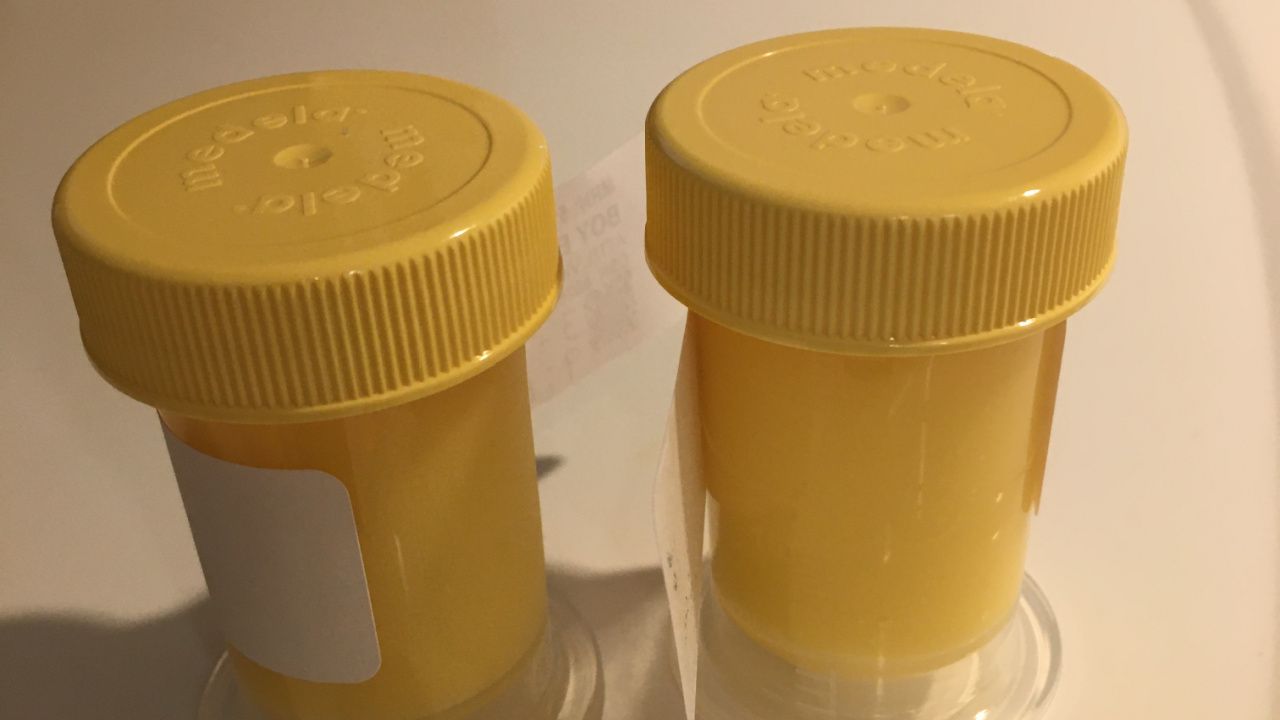Colostrum: LLAMAS Pee Gold
Jan 23, 2023
Colostrum is the first form of human milk, being present from about 16 weeks' gestation to several days after birth. The color of colostrum can vary - pale yellow, yellow, light orange, deep gold, clear. The color is due to beta-carotene, a product of Vitamin A.
Primips (women giving birth for the first time) have fewer carotenoids (that's the beta-carotene product) compared to multips (women with multiple pregnancies). Thus, primips may have lighter colors of colostrum. That's a new fact for me!
Here is a picture of colostrum on the left and mature milk on the right.
I made it through medical school using mnemonics to remember facts. A mnemonic is a technique, like a pattern of letters, that helps you remember something. Each letter in the mnemonic stands for something.
Use the mnemonic, LLAMAS Pee Gold, to remember components of colostrum.
- L Living cells / Colostrum contains approximately 5 million cells per mL. This number decreases tenfold in mature human milk. A type of white blood cell called macrophages make up the majority of the cells at 90%. These cells engulf and absorb pathogens. Another type of white blood cell is a lymphocyte and these comprise the other 10%. The picture below shows infant formula on the left and human milk on the right. They are stained blue so we can see what's in there. The dark circles in the human milk side represent white blood cells.

- L Lactoferrin / Lactoferrin in colostrum binds and transports iron. It offers protection against infection by keeping iron away from pathogens (the bad guys). Pathogens need iron to grow and multiply.
- A Secretory IgA / This is a major component in colostrum. Secretory IgA is the main immunoglobulin (antibody) in human milk. Secretory IgA is 15-40 times higher in the first 24 hours than during any other stage of lactation. These antibodies are directed specifically against the dangerous pathogens in the mother’s environment. The newborn gut is permeable in the first days of life. Secretory IgA acts like a varnish, coating the gut, sealing off entry points for those potential pathogens.
- M Microbiome / Human milk is not a sterile liquid. Following birth, the bacteria in human milk help the infant’s gut establish beneficial, non-pathogenic bacteria, particularly bifidus flora, which crowd out the growth of other, more dangerous bacteria.
- A Vitamin A / Colostrum is high in vitamin A which gives it the yellow color and provides more immune protection to the infant.
- S Sugars - HMOs (human milk oligosaccharides) / It is stretching it a bit to call HMOs "sugars" but it makes the mnemonic work! HMOs are a family of structurally diverse carbohydrates that are highly abundant in and unique to human milk. HMOs work as: 1) A prebiotic serving as food for “good bacteria” to help shape a healthy microbiome - think of it like a fertilizer, helping the good grass to grow; 2) Decoy receptors that prevent pathogens from attaching to infant mucosal surfaces; and 3) A partner with gut bacteria to produce sialic acid which is an essential nutrient for brain development and cognition. Over 200 HMOs have been discovered to date. HMOs are unique to the mother.
- P Protein / Compared to mature milk, colostrum has a higher concentration of protein and a lower concentration of lactose and fat. Also, the whey: casein ratio of colostrum is 90:10. Whey contains many of the important components we have discussed: alpha-lactalbumin, lactoferrin, lysozyme and antibodies. Whey is easy to digest and has a mild laxative effect.
- G Growth factors / Colostrum contains growth factors, like epidermal growth factor. These help to mature the gut and promote gut cell closure.
Mnemonics work if you can remember them and for some reason this one seems to work.
LLAMAS Pee Gold. Get it? Liquid Gold?
Subscribe to our Blog
Join our mailing list to receive the latest blog posts, courses and updates from our team.
We hate SPAM. We will never sell your information, for any reason.


